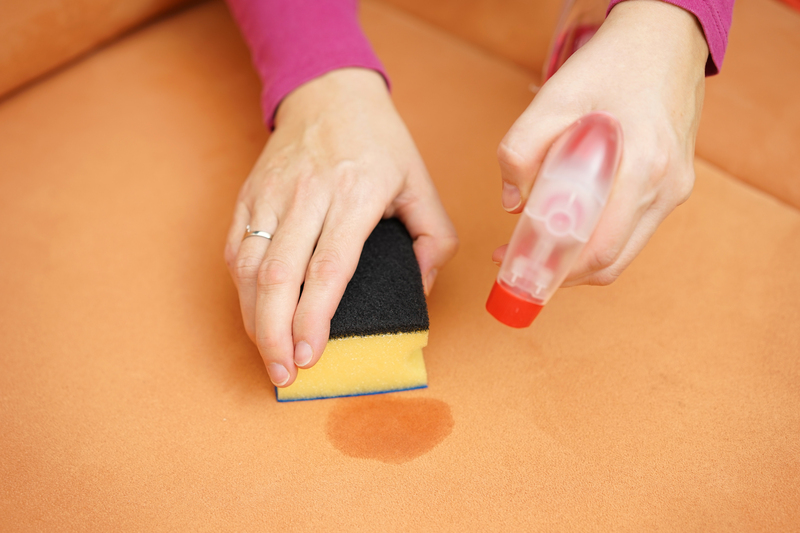Transforming Homes with Superior Air Quality
Posted on 23/09/2025

Transforming Homes with Superior Air Quality: A Comprehensive Guide
Are you ready to revolutionize your living environment for improved well-being? Discover how superior indoor air quality can transform your home and enhance your family's health, comfort, and lifestyle. This in-depth guide reveals the latest strategies and technologies to achieve pristine air at home.
Why Is Indoor Air Quality So Important?
The air circulating in your home profoundly impacts health, mood, and productivity. Pollutants such as dust, pet dander, volatile organic compounds (VOCs), and mold can accumulate indoors, leading to allergies, respiratory issues, and diminished quality of life. Surprisingly, indoor air can be up to five times more polluted than outdoor air.
- Improved air quality supports better sleep and cognitive function.
- It minimizes indoor allergens and asthma triggers.
- Enhanced air purity decreases household odors.
- Clean indoor air safeguards children's and seniors' health.
Key Pollutants Threatening Home Air Quality
Effective home air quality transformation begins with understanding the polluting culprits. Frequent offenders include:
- Particulate Matter (PM2.5/PM10): Fine airborne particles from cooking, heating, or traffic intrusion.
- Volatile Organic Compounds (VOCs): Harmful gases released from paints, furniture, cleaners, and new materials.
- Mold Spores: Arise in damp, poorly ventilated spaces.
- Pet Dander and Hair: Microscopic skin flakes and fur can trigger allergies.
- Dust Mites: Thrive in bedding, carpets, and fabrics.
Transforming Your Home with Clean Air Solutions
Ready to upgrade your home's air quality? Explore the most effective ways to reduce indoor pollution and nurture a healthier living space.
1. Prioritize Ventilation
Good ventilation is fundamental to maintaining optimal indoor air. Fresh air helps flush out stagnant pollution and restores oxygen levels.
- Use exhaust fans in kitchens and bathrooms to remove humidity and contaminants.
- Open your windows regularly, particularly during low-pollen hours and favorable weather.
- Install whole-house ventilation systems for consistent airflow and pollutant dilution.
2. Adopt Advanced Air Purification Technologies
HEPA (High-Efficiency Particulate Air) filters and other air purifying solutions can capture up to 99.97% of pollen, dander, and dust. For enhanced home air transformation:
- Choose an air purifier sized appropriately for your room.
- Consider UV-C light purifiers to neutralize bacteria, viruses, and mold spores.
- Use activated carbon filters to absorb VOCs and odors.
- Smart purifiers allow you to monitor and control air quality remotely.
3. Maintain Ideal Humidity Levels
Unchecked humidity can foster mold, bacteria, and dust mite growth. Maintaining a 30%-50% humidity level helps to inhibit these invaders:
- Deploy dehumidifiers in damp basements and bathrooms.
- Use humidifiers during dry winters to prevent throat irritation and dry skin.
- Fix leaks and ensure gutters direct water away from your home.
4. Opt for Low-VOC and Eco-Friendly Household Products
Many cleaning agents, paints, and furnishings emit harmful VOCs. Transitioning to eco-friendly alternatives can significantly improve air purity indoors:
- Choose paint and furniture marked as "low-VOC" or "no-VOC."
- Use natural cleaning products like vinegar, baking soda, or certified green cleaners.
- Avoid aerosol sprays and strong synthetic fragrances.
5. Elevate Your Space with Indoor Plants
Houseplants not only beautify interiors, but several also act as natural air purifiers capable of removing toxins like formaldehyde and benzene:
- Spider Plant, Peace Lily, and Snake Plant are easy-to-maintain favorites.
- Avoid overwatering to prevent the risk of mold.
Practical Steps for Ongoing Home Air Quality Excellence
Reputable organizations such as the EPA offer additional guidelines for ensuring exemplary air quality at home:
- Sweep and vacuum carpets weekly with a HEPA-equipped vacuum to trap allergens.
- Wash bedding, curtains, and soft toys frequently in hot water (above 130?F/54?C).
- Ban indoor smoking and restrict use of candles or fireplaces.
- Replace HVAC air filters every 1-3 months for maximum filtration.
- Have air ducts professionally cleaned every few years.
Emerging Technologies for Superior Home Air Purity
The modern era brings innovation to home environments. Here are some of the latest breakthroughs in the field of indoor air transformation:
- Smart Air Sensors: Real-time devices analyze indoor air and provide actionable insights via smartphone apps.
- Integrative HVAC Systems: Modern units combine heating, cooling, filtration, and humidity controls for seamless air management.
- Photocatalytic Oxidation (PCO): Breaks down VOCs and microorganisms using light and specialized catalysts.
- Automated Air Exchanges: Systems that ventilate based on CO2 or pollutant sensors.
Health Benefits of Superior Air Quality at Home
Making the shift to a home with exceptional air quality comes with powerful advantages:
- Decreased allergy and asthma symptoms for all family members.
- Reduced risk of respiratory infections.
- Enhanced mental sharpness and concentration for work or study from home.
- Better sleep quality and overall vitality.
- Increased productivity and comfort in your living space.
- Protection for infants, elderly, and immunocompromised relatives.
Common Myths About Home Air Quality
There's a lot of misinformation surrounding the topic of air quality improvement. Let's separate fact from fiction:
- Myth: "If my home is clean, my air is clean."
Truth: Many pollutants are invisible and persist in the air even in spotless homes. - Myth: "Air purifiers can remove all indoor toxins."
Truth: While valuable, no purifier can tackle every potential contaminant, especially gases and VOCs without a carbon filter. - Myth: "Opening windows always helps."
Truth: Sometimes outdoor air can introduce pollen or pollution; it's crucial to monitor local air quality before ventilating.
How to Measure and Monitor Your Home's Air Quality
Continuous monitoring is key to maintaining a superior indoor atmosphere:
- Install an air quality monitor to track PM2.5, VOCs, CO2, temperature, and humidity.
- Use professional air testing services for a detailed breakdown, especially after major renovations.
- Set up alarms or notifications that alert you when air quality dips.
Pro tip: For optimal results, review sensor data to spot trends and take preventive action before issues arise.

Conclusion: Embrace Superior Air Quality--Transform Your Home and Your Life
By implementing the strategies and tips above, your home can become a sanctuary of fresh, healthy air that promotes well-being, comfort, and productivity. Begin your journey toward superior air quality at home today--invest in advanced purification technology, sustainable habits, and ongoing vigilance. Your lungs, and your loved ones, will thank you!
- Assess your current indoor air quality.
- Create a custom plan using the steps above.
- Invest in modern tools for seamless monitoring and filtration.
- Reap the lifelong benefits of a transformed, rejuvenating living space!
For further reading and expert guidance on transforming your home with superior air quality, explore reputable sources such as the Environmental Protection Agency (EPA Indoor Air Quality) and leading home health organizations.





